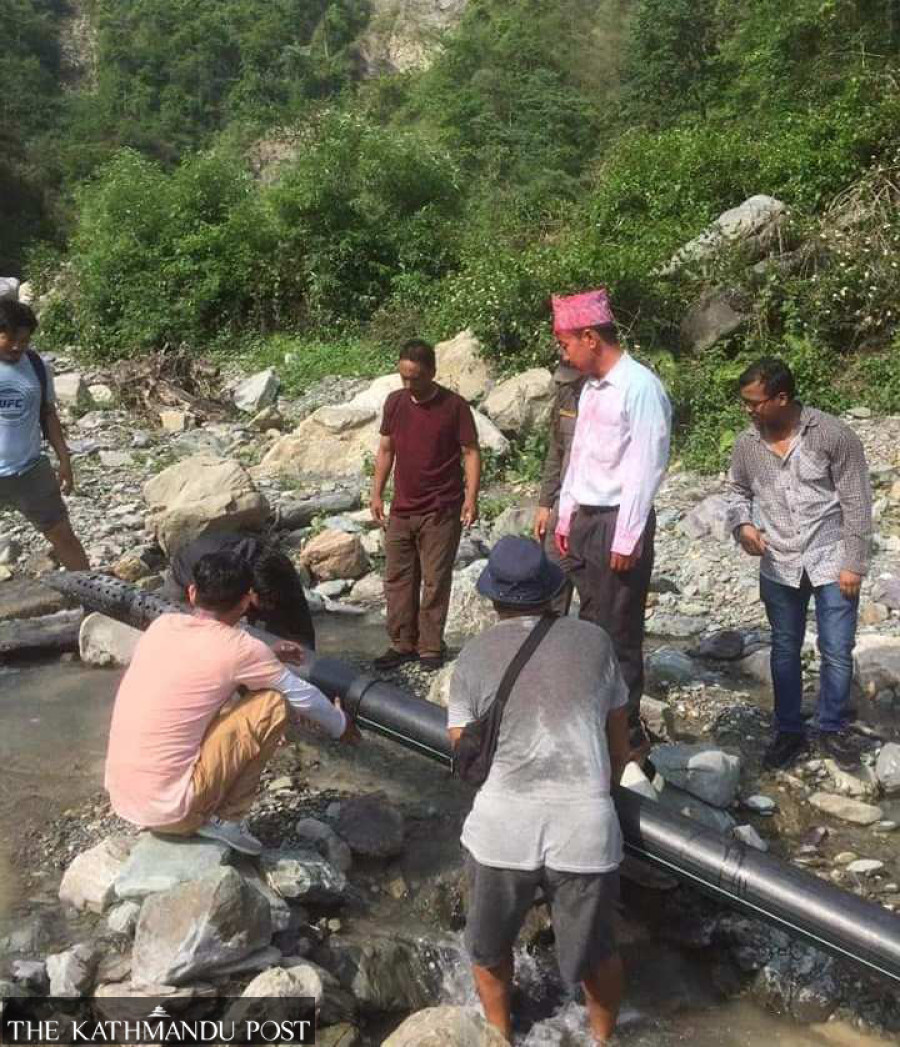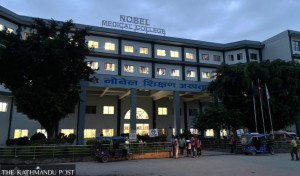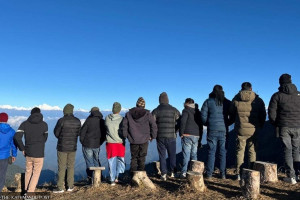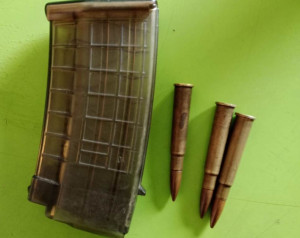Koshi Province
Dharan plagued by acute water crisis driven by years of mismanagement
Dharan residents face acute water shortages every dry season. In some areas, people wait for three days to get water in their taps.
Pradeep Menyangbo
Manjita Khadgi, a resident of Shantipath in Dharan-7, struggles every day to manage water for household purposes.
“At Shantipath, there are two pipelines–one that was built by the Nepal Drinking Water Corporation and another built by Dharan Drinking Water (Restoration, Upgradation and Development) Sub Project. The corporation pipeline always runs dry even though the corporation has now merged with the board,” said 31-year-old Khadgi. “We struggle daily to get water.”
Since 2003, Dharan residents have been facing acute water shortages every year during the dry season. In some areas, people wait for three days to get water in their taps.
The city of Dharan was the second urban area after Kathmandu Valley to get a planned drinking water supply distribution system. However, Dharan has always remained parched during the dry season.
Various political parties over the years have made promises of supplying water to the city residents. However, the promises have never been fulfilled. The recently elected mayor of the sub-metropolitan city, Harkaraj Sampang Rai, of Buddhachowk in Dharan-18 raised the drinking water crisis as his main election agenda. Voters this time have given their verdict and entrusted the 39-year-old social campaigner to resolve chronic drinking water problems.
Surrounded on three sides by the Mahabharat hills and on one side by the sparse shrub vegetation, Dharan is perfectly located for human habitation. Of the 20 kilometres from the Tinkune entry gate to Bhedetar, Dharan boasts five different types of climate and is an attraction for many local and foreign tourists. However, retired Associate Professor Dr Rajendra Sharma of AP Mahendra Multiple Campus, an expert on Dharan and its drinking water problems, says Dharan has always been plagued with acute water shortages.

“After the increase in the number of residents in Dharan, a converging point between Tarai and the hills, the then Rana prime minister Judda Shumsher, in 1938, had constructed a water tank in Fusre, where water from Sardu-Khardu stream was collected and then distributed to the city residents,” said Sharma.
Later in 1959, Dharan became a transit point for Nepali British soldiers after the establishment of the British Ghopa Camp. The soldiers, especially from the Kiranti community, would return home after completing their 15-20 year service and settle in the area. They opted to buy land and settle in Dharan as there were schools, transport services and hospitals run by the British government. This led to a rise in the city’s population.
But over the years, the authorities failed to take the population spurt into consideration and manage a proper water supply system leading to acute drinking water shortages in the sub-metropolis.
The water sector of the then Dharan City Panchayat was responsible for distributing water to the residents until 1977. In an effort to manage the distribution of drinking water, Nepal Drinking Water Corporation was handed over the responsibility the same year. The Dharan City Panchayat established a water division and distributed water to around 7,000 private taps at a cost of Rs11 per month.
In 1987, a ductile pipeline was installed in the city with a financial loan and aid from the World Bank to address the water problems that the growth in population brought about.
Sharma says that since the water from Sardu-Khardu stream did not meet the demand of the city, the city began digging four deep tube wells in the area with sparse shrub vegetation in the southern part of the city and began distributing water.
As of 2021, when the corporation handed over its responsibilities to the Drinking Water Management Board, 16,000 consumers in 19 wards of the sub-metropolis were connected to drinking water lines. However, the connectivity has done little to assuage the water problems faced by the city residents.
In view of the water crisis, the Nepal government and Asian Development Bank signed a $22 million agreement on May 8, 2012. The agreement was a part of the government’s Urban Development Programme. As part of the agreement, Dharan Drinking Water (Restoration, Ugradation and Development) Sub Project was carried out and a contract was issued to Tianjin Tundi JV. The Detailed Project Report was prepared by Wielding Design Authority. As per the contract, seven more deep tube wells were dug inside the sparse shrub forest area, taking the total number of deep tube wells to 11. The agreement expired last December.
When the board took over the ownership and responsibilities of the corporation, it had designed a plan to distribute the water pipeline to 28,841 houses and increase it to 30,000 households by 2030. However, until mid-2022, there were over 28,000 consumers. The contractor company has completed 95 percent of the work and handed over the project to the board. But the project was handed over without running tests pre-operation leading to a dismal result.

Board Director Raju Pokhrel said that the city’s water crisis persists as there is leakage in the source and distribution mechanisms.
“The city’s demand for water is around 25 million litres per day. In winter, only 18 million litres can be produced from the deep tube wells and the Sardu-Khardu stream. And with one of the 11 deep tube wells damaged, we are only producing 10 million litres of water, which has deepened the water crisis,” said Pokhrel.
Pokhrel said that the main reason behind the problem in smooth distribution of drinking water is the unmanaged and old infrastructure of the corporation and damages in pump and generator pipelines.
“There are several places that need interconnection between the pipelines. Almost half of the pipeline in the Fusre system is yet to be connected with the board’s pipeline,” said Pokhrel. “This has caused problems in the proper distribution of water.”
The project has constructed reservoir tanks in four places of Dharan. Of them, 600,000 lt tank has been constructed in Fusre, 900,000 lt tank has been constructed in Pindeshwor and another 600,000 lt tank built in Bishnuchowk. Meanwhile, water is distributed to other parts of the city through the 3 million litre capacity tank of the Sumnima system, informed Pokhrel.
“Although the underground water is being produced as per the estimate of the DPR, ineffective management has caused problems in water distribution,” said Pokhrel.




 7.12°C Kathmandu
7.12°C Kathmandu














